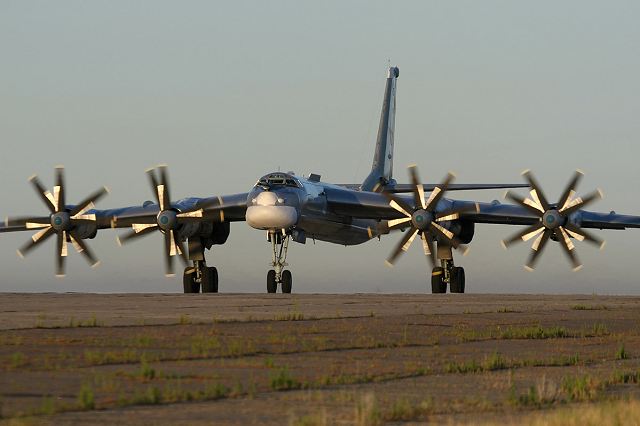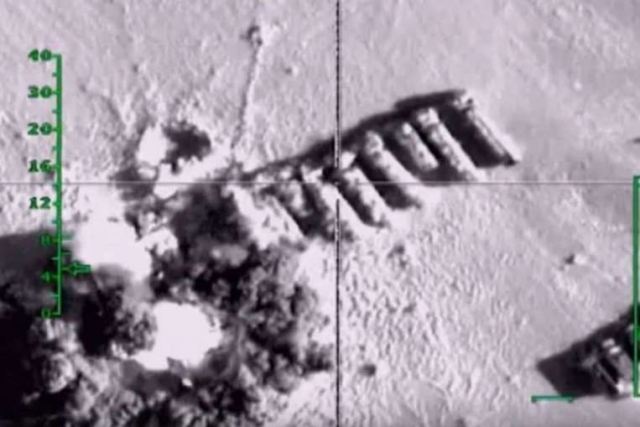- Army
- Conflicts in the world
- Israel - Iran conflict 2025
- Pakistan - India Conflict 2025
- Russia Ukraine War 2022
- Libya conflict day by day
- HAMAS - Israel War 2023
- Operation Serval in Mali French Army
- Sangaris operation Central African Republic
- Sangaris opération militaire République Centreafrique
- Ukraine - Russia conflict
- Syria conflict news
- Defence & Security Industry Technology
- Armies in the world
- Analysis Defense and Security Industry
- Conflicts in the world
- Navy
- Air
Massive air attacks in Syria by Russian fighter and bombers aircraft against Islamic State targets TASS 12011152
|
|
|||
|
The conflict in Syria
|
|||
|
|
|||
| Massive air attacks in Syria by Russian fighter and bombers aircraft against Islamic State targets. | |||
|
Russian warplanes conducted the third massive air attack on the terrorists in Syria on the morning of November 19, Andrei Kartapolov, chief of the Main Operations Directorate, Russian General Staff, told journalists. Thursday, November 19, 2015-, at 09.00 Moscow time (06.00 GMT), the Russian Aerospace Force has delivered the third massive airstrike against illegal armed groups in Syria, said Andrei Kartapolov.
|
|||
|
|
|||
 The Russian Tupolev Tu-95 is a large, four-engine turboprop-powered strategic bomber and missile platform. The Russian Tupolev Tu-95 is a large, four-engine turboprop-powered strategic bomber and missile platform. |
|||
|
|
|||
|
Tupolev Tu-95MS (NATO reporting name: Bear) strategic bombers in Russian airspace launched 12 cruise missiles at the targets of the Islamic State (IS) terrorist organization in Syria, with the targets including the group’s headquarters in the city of Idlib. The attack on the terrorist targets in the provinces of Aleppo and Idlib took place between 09.00 and 09.20 Moscow time (06.00-06.20 GMT).
"The targets were petroleum, oil and lubricant (POL) dumps, a high explosives factory, a command post and the headquarters of the ISIL (the previous name of IS) organization in the city of Idlib," Kartapolov added. A squadron of Tu-22M3 (Backfire) supersonic long-range bombers had attacked six targets in Syria’s provinces of al-Raqqa and Deir al-Zor from 16.40 to 17.30 Moscow time (13.40-14.30 GMT) on November 19. "The attack targeted the terrorist-operated oil refineries in the IS-controlled area, an ammunition dump and a mortar making and repair workshop. The strike destroyed a headquarters, three POL and ammunition dumps, a high-explosives factory, a command post, a mortar making and repair workshop and three large oil refineries and an oil transfer station," Kartapolov said. The Russian strike air task force deployed to Syria conducted almost 100 sorties, destroying 190 terrorist targets during the above period. "60 sorties had been flown and 138 targets eliminated as of 17.00 Moscow time [14.00 GMT]," the general said. "The Russian Aerospace Force carries on with massive air strikes against the terrorists in line with the air operation plan," Kartapolov added. The chief of the General Staff’s Main Operations Directorate said Russian aircraft had put an end to 206 terrorist targets on 126 sorties during the second massive air attack in Syria on November 18. "The second massive air strike on 206 terrorist targets was delivered November 18 in accordance with the plan of the air operation. Russia’s Tu-160 (Blackjack) and Tu-22M3 aircraft operating out of the Russian Federation and tactical strike aircraft operating out of Hmeimim air base [in Syria] had flown 126 sorties over 24 hours," Kartapolov said. |
|||
|
|
|||
 A video grab said to show Russian airstrikes on ISIS tankers carrying oil.AFP A video grab said to show Russian airstrikes on ISIS tankers carrying oil.AFP |
|||
|
|
|||
|
According to him, strike aircraft at Hmeimim air base logged 100 sorties, destroying 190 targets, including 58 control centers, 41 ammunition dumps, 17 strongpoints and fortified positions and 74 assembly areas.
Sixteen long-range air-launched cruise missiles took out seven high-value terrorist targets in the provinces of Aleppo and Idlib. The long-range bombers hit 12 targets of IS in the provinces of al-Raqqa and Deir al-Zor. The militants in Syria have been suffering heavy casualties owing to the mass air strikes by the Russian Air Force. "There have been intelligence reports that members of the Sham Taliban terrorist group took the body of their commander, Ahmad Ziyya, killed near the Jubb al-Ahmar Mountain, out of the country on the night of November 18, while the remaining terrorist group operating in the area asked for urgent reinforcements due to the heavy manpower losses sustained," Kartapolov said. Besides, the general said, "according to the leaders of the terrorist groups operating in the province of Idlib, a Russian cruise missile inflicted heavy losses on the militants, when it hit their installation near the town of Juzef." "Terrorist leader Abu Bakr killed in a Russian air raid was buried in Ashim on November 18," Kartapolov added. The Russian Defense Ministry is checking out the elimination of key terrorists in Syria, using satellites, with the Syrian Army providing intelligence on the losses suffered by the militants. According to Kartapolov, the effectiveness of the Russian air strikes is assessed by analyzing the footage of the video cameras onboard the warplanes and unmanned aerial vehicles (UAV). "The destruction of critical targets is checked out against the intel gleaned by reconnaissance satellites, while the Syrians provide us with data on the manpower losses of the terrorists," Kartapolov. The militants of the Islamic State in Syria have admitted the loss of three of their leaders in the province of Aleppo to the Russian air strikes. "The militants have admitted the death of their leaders Abu Nurlbagasi, Mohammed ibn Khairat and al-Oqab, who operated in the area adjacent to Aleppo," Kartapolov said in a media briefing. The terrorists’ command and control was totally disrupted in several Syrian provinces due to the Russian massive air attacks. "The losses have disrupted command and control of the militant groups operating in the province of Homs. Some of the groups have refused to fight," Kartapolov said. According to the general, the militants led by Abu Musab al-Suri with Jabhat al-Nusra disregarded the order to destroy the Syrian troops near the town of Deir Hanna. "The terrorist leader with the call sign Abu Hussan violated the order and refused to move his group to the vicinity of the town of Tell Bisa in Homs province," the general said. The first two massive Russian air attacks on the terrorist took place on November 17 and 18. Russian aircraft have been hitting terrorist targets in Syria since September 30 at the request of Syrian President Bashar al-Assad. More than 50 fixed-wing and rotary-wing aircraft are. Earlier this week, Russian President Vladimir Putin ordered the attacks on the terrorists in Syria ramped up. Long-range bombers have been used in air strikes, and the General Staff has announced its plans to use eight Su-34 (Fullback) tactical bombers and four Su-27SM (Flanker) fighters in the attacks. The Russian Armed Forces launched their operation against the Islamic State and Jabhat al-Nusra militants (both organizations have been banned in Russia) in Syria at the request of the Syrian President Bashar a-Assad on September 30, 2015. The Russian air task force deployed at Hmeimim air base in the Syrian province of Latakia comprises over 50 aircraft, including Su-34 and Su-24M tactical bombers, Su-25 (Frogfoot) attack aircraft, Su-30SM (Flanker-C) multirole fighters and Mil Mi-8 (Hip) and Mi-24 (Hind) helicopters. The operation also involved Russian Navy ships that struck the terrorists with sea-based cruise missiles of the Kalibr system, launched from the Caspian. Russia is not intent on joining the ground operation. |
|||
|
|
|||
|
© Copyright 2015 TASS. All rights reserved. This material may not be published, broadcast, rewritten or redistributed.
|
|||


























